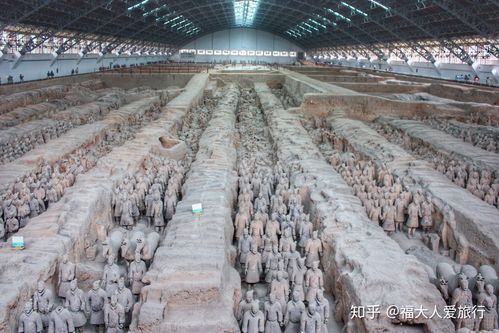
Twenty Terracotta Warriors Discovered Near China's Secret Emperor's Tomb
New Discoveries at the Mausoleum of the First Qin Emperor
Archaeologists have unearthed 20 new Terracotta Warriors near the secret tomb of China's first emperor, Qin Shi Huang. This discovery adds to the already impressive army of over 8,000 life-size figures buried with the emperor to protect him in the afterlife.
The Significance of Pit No. 1
The sculptures were discovered in Pit No. 1, a section of the mausoleum dedicated to infantry and chariots. This pit is renowned for its vast scale and the meticulous arrangement of warriors, each with unique features. The new figures comprise 16 infantrymen and four charioteers. Archaeologists are particularly excited about the discovery of the charioteers as they are often found in more elaborately decorated chariots, hinting at the possibility of finding additional artifacts.
Unveiling Ancient Secrets
The discovery of these new warriors provides valuable insights into the military practices, artistry, and culture of the Qin dynasty. The Terracotta Army is considered one of the most significant archaeological finds of the 20th century, and each new discovery further unravels the mysteries of this ancient civilization.
The Ongoing Excavation
The excavation of the mausoleum, which began in the 1970s, is an ongoing project. The tomb itself remains unopened, shrouded in mystery and legend. Archaeologists are cautious in their approach, utilizing advanced technologies to preserve the site and its treasures for future generations.
The Legacy of Qin Shi Huang
Qin Shi Huang, who reigned in the 3rd century BC, is known for unifying China and establishing a centralized empire. His mausoleum, a vast underground city, reflects his immense power and ambition. The Terracotta Army, with its lifelike warriors and horses, is a testament to the artistic ingenuity of the time and offers a glimpse into the military might of the Qin dynasty.
FAQs
What is the significance of the Terracotta Army?
The Terracotta Army is a vast collection of life-size terracotta sculptures depicting the armies of Qin Shi Huang, the first emperor of China. It is a significant archaeological find, providing valuable insights into ancient Chinese military practices, artistry, and culture.
Why was the tomb built?
The tomb was built to house the remains of Qin Shi Huang and to protect him in the afterlife. The Terracotta Army and the opulence of the tomb reflect the emperor's belief in his power and his desire for immortality.
Is the tomb open to the public?
While the vast majority of the mausoleum complex remains unexcavated, the excavated portions, including the pits containing the Terracotta Army, are open to the public. The tomb itself, however, remains unopened.
note: This return of all, without the author's permission, may not be reproduced